This article was co-authored by Laila Ajani. Laila Ajani is a Fitness Trainer and founder of Push Personal Fitness, a personal training organization based in the San Francisco Bay Area. Laila has expertise in competitive athletics (gymnastics, powerlifting, and tennis), personal training, distance running, and Olympic lifting. Laila is certified by the National Strength & Conditioning Association (NSCA), USA Powerlifting (USAPL), and she is a Corrective Exercise Specialist (CES).
There are 27 references cited in this article, which can be found at the bottom of the page.
This article has been viewed 233,522 times.
Having a strong, aesthetic physique is a universal desire. Seeing the rippling, toned bodies of athletes and fitness models may make having a muscular build seem like an unattainable goal, but anyone can improve their physique, as well as their fitness and general health, by beginning an intensive resistance training regimen and making the right dietary choices.
Steps
Building Muscle Through Strength Training
-
1Begin a structured weightlifting program. Once you’ve made the decision to improve your physique, the first thing you should do is start a dedicated strength training program. Your regimen should be comprehensive, targeting all the major muscle groups of the body, and you should perform workouts on a consistent basis, taking days off only to rest. If you want to build muscle, weight training must become part of your lifestyle.[1]
- It is extremely important to have an understanding of proper technique and body mechanics before you progress to lifting heavier weights. Failure to select a manageable load can result in injury.
-
2Work out multiple times a week. In the beginning, you should aim to lift weights around three days a week.[2] Weight training can be tough on inexperienced muscles and joints, and an acclimation period is usually necessary to prepare the body to regularly overcome resistance. As you gain experience and your body becomes used to the strain, you can incorporate another workout or 2 per week, though you should still take a couple off days to allow for muscular recovery.[3]
- To make the most efficient use of your time in the gym, consider performing a traditional bodybuilding “split” workout, in which 2 or more muscle groups (e.g. back and biceps/legs and abs) are exercised consecutively during the same workout.[4]
Advertisement -
3Concentrate on lifting heavy weight multiple times. There is a persistent debate over the best number of sets and reps to perform to achieve certain goals, but most modern fitness research points to one simple rule: if you want to build muscle, you have to lift something heavy a lot of times.[5] Don’t overthink it: start with a straightforward 3x10 structure (three sets of ten repetitions of a given exercise) until progress begins to slow, then either increase the weight you’re using or the number of reps you’re performing to keep improving.[6]
- Once you’ve gained a little experience with strength training, you can start experimenting with different weights and rep ranges to find out what works best for your body type: low reps (1 to 3) with extremely high weights are most often used to gain explosive strength, while high rep ranges (15 – 30) are useful for increasing endurance.[7]
- When implementing a set-rep scheme like a 3x10 or 5x5, you should pick a weight that’s heavy enough so that you can only perform that many repetitions per set.
-
4Incorporate bodyweight movements. Round out your weight training sessions with bodyweight movements like push ups, pull-ups, crunches and unweighted squats and lunges. Bodyweight exercises force you to stabilize and control the movement of your own body, which means they’re very effective at building muscle and translate well to athletic endeavors. While on your weight lifting journey, don’t forget about the basics.[8]
- Bodyweight exercises are a saving grace for many people who don’t have access to gym equipment, or with past injuries that make excessive weight-bearing movements too difficult; all you need is a few feet of space in your own home and the will to push yourself.
- Try ending your workout with a series of “finishers” (exercises of moderate intensity performed for long periods, designed to totally exhaust you at the end of a session) consisting of bodyweight movements. Pushups, burpees, squat jumps and mountain climbers all work well for this purpose.[9]
-
5Feel the “mind/muscle connection.” When you lift weights, you should make an effort to be conscious of the way the muscle feels when exerting itself through the movement. This is what scientists and strength coaches refer to as the “mind/muscle connection.” The basic principle is that the more you concentrate on actively engaging a muscle during a particular lift, the more you’ll get out of that muscle and the better your results will be. The mind/muscle connection can help you get more bang for your buck so that you’re working efficiently, not just hard.[10]
- While performing a bicep curl, for example, fix your focus on the contraction of the muscle itself, think about how all parts of the movement feel and squeeze the muscle to keep the muscle fibers active throughout the lift.
- Understanding basic kinesiology and the mechanical workings of the human body are an integral part of lifting weights.
Modifying Your Diet to Enhance Your Physique
-
1Get plenty of protein. Every tissue in your body is comprised of cellular proteins, and these are broken down and depleted when your body undergoes the strain of exercise. Replenish lost proteins and provide your body with enough to generate new muscular growth by consuming lean meats, eggs, nuts or dairy with every meal. Protein is the cornerstone of every bodybuilder’s diet.[11]
- Grilled, skinless chicken breasts, eggs cooked in olive oil instead of butter, almonds and skim milk are all excellent low-cost, high-protein choices.
- Athletes and those seeking to build muscle mass require much more daily protein than the average person. A good general rule is to ingest at least half a gram of protein for every pound of your body weight per day (if you weigh 200 lbs, that’s 100 g of protein).[12]
-
2Use supplements to complete your diet. Try adding basic supplements to your diet to ensure that you’re meeting your nutrition requirements. It can be difficult to get as much protein and other nutrients as you need every day from regular food. This is where supplements come in. A protein shake or bar can quickly net you 30 or 40 g of pure protein without the need to painstakingly prepare a meal. These supplements are available at any time and are a good way to stave off hunger cravings. They can even be used to replace meals if you’re in a hurry.[13]
- For most people, a high-quality whey protein supplement (and possibly some creatine, if you’re serious about packing on size) will be enough to supplement a standard diet.
- Protein supplements are especially important for vegans and vegetarians seeking to build muscle mass, as the foods richest in protein are usually forbidden from these diets. Vegetarian and vegan proteins are derived from natural plant sources and function identically in the body.[14]
- While they are convenient, protein shakes, energy bars and other supplements should never take the place of fresh, whole food on a day-to-day basis. They are just that: supplements.
-
3Eat green vegetables. You always heard this as a child, and it’s still good advice now. Brightly-colored vegetables are full of antioxidants and other nutrients like iron, potassium, dietary fiber and vitamins. These should find a steady place in your diet.[15]
- Generally speaking, vegetables that are green, leafy, or come in especially bright or dark colors contain the highest concentrations of beneficial nutrients. This makes produce like broccoli, kale, spinach and sweet potatoes perfect for building a healthy body.[16]
-
4Choose the right fats and carbohydrates. Fats and carbohydrates are calorie-dense food types, meaning they provide immediate and lasting energy to the body. While most people arguably rely too much on the availability and culinary appeal of these foods, they are indispensable for active individuals. The majority of your carbohydrates should come from “clean” sources, such as whole grains, fruits and vegetables (as opposed to enriched grains, starchy pastas, processed sugar, etc.), while for fats you should mostly stick to the mono- and polyunsaturated variety, which includes offerings like avocados, almonds, and olive oil.[17]
- Carbohydrates are essential for fueling strenuous activity, but can also easily cause unwanted fat production if you go overboard with them. Your recommended carb intake depends on a variety of factors (including age, weight, height, and activity level). Try an online calculator to determine how many grams of carbohydrates you should eat daily.[18]
- Mono- and polyunsaturated fats contain compounds that target free-radicals in the body’s cells, reversing oxidation damage and keeping you looking and feeling healthy.[19]
-
5Limit your intake of unhealthy foods. This is a no-brainer, but everyone sometimes needs a gentle reminder, especially with the renewed popularity of junk food items like pizza, cupcakes and mac and cheese. Save these treats for a hard-earned cheat day, or for the first meal following a grueling workout, where most of the excess calories will be used to restore the muscles’ lost energy. Building a strong body requires restraint as well as effort — it would be a shame to blow a week’s worth of sweat on a couple ill-advised food choices.[20]
- Resist the urge to binge eat. If you’re hungry, make or order a balanced meal that contains at least 1/3 lean protein with a carbohydrate source and a fresh fruit or veggie. Don’t wait until you’re starving and can’t help but pull into the fast food drive-thru on your way home.[21]
Improving Your Lifestyle and Habits
-
1Take rest days.[22] You should be taking at least 2 days off from weight lifting and other exercise during the week. Few things are more important in building strong, healthy muscle mass than rest. When you perform weight-bearing exercise, you’re actually causing wear-and-tear on the muscles and joints that accumulates if not given adequate time to heal. Resting gives those hard-working muscle fibers time to recover and thicken, making them more resistant to strain and causing the muscle itself to grow larger.[23]
- Stagger your rest days so that they fall within your regular training routine. For instance, you might work out your back and biceps on Monday, your legs and core on Tuesday, rest Wednesday, exercise chest and triceps Thursday, go for a run Friday, rest Saturday, etc. That way, all your major muscle groups are receiving attention while being given ample time to rest between muscle-specific days, which 2 days a week to take off entirely.
- Muscles that are not given a chance to recover and heal themselves will accumulate damage until they become prone to injury.
-
2Go to sleep. Make sure that you get sufficient rest. The human body does most of its repair work at a cellular level while you sleep. This means that small tears and strains are being fixed, fat is being metabolized for continual energy and new muscle is being constructed whenever you’re tucked in for the night. Too many people give themselves reasons not to get enough sleep, not realizing that sleep-deprivation and having a strong, healthy body are in opposition of each other.[24]
- Try to get 7 to 9 hours of sleep every night.
- Turn off all visually and aurally-stimulating distractions at least 1 hour before bed. The electromagnetic energy from your TV, iPad or gaming system may be making it harder for you to fall asleep and stay that way.[25]
-
3Cut down on alcohol consumption. Everybody loves a good party, but drinking too much alcohol always does more harm than good. This is equally true when it comes to your health and fitness. Not only is alcohol packed with non-nutritive calories, too much of it can leach calcium from your bones, making weightlifting difficult and dangerous. Don’t be afraid to have a couple beers on special occasions, but make sure it’s not an everyday occurrence, and beware of drinking to excess.[26]
- Most beers and liquors are distilled from fruits, vegetables and grains, which means they contain all of the carbohydrates from sugar with none of the nutritional value.
- Alcohol consumption is also linked with tissue damage, nerve dysfunction and even organ failure in habitually large quantities.[27]
-
4Minimize stress. An often-overlooked aspect of putting on muscle is properly moderating the body’s hormonal levels. Natural hormones like testosterone play an important role in directing muscular growth, and these hormones can be negatively influenced by factors such as stress and anxiety. More than anything, stress is an inhibiting response — building the muscular physique you desire can become more of a challenge if your body’s resources are not being utilized effectively.[28]
- Find constructive ways of reducing stress. Practice positive thinking, take a few minutes for silent meditation at the end of the day or slip into a relaxing bath. Anything you can do to minimize the effect stress has on your life will enable you to reach new peaks in your fitness goals and quest for a healthy mind and body.[29]
- Exercise itself is one of the best forms of stress relief. Working out regularly will give you the body you want, but it will also let you blow off steam, work through daily stressors and achieve mental clarity.[30]
Expert Q&A
-
QuestionAt what age will muscle stop growing?
 Michele DolanMichele Dolan is a BCRPA certified Personal Trainer in British Columbia. She has been a personal trainer and fitness instructor since 2002.
Michele DolanMichele Dolan is a BCRPA certified Personal Trainer in British Columbia. She has been a personal trainer and fitness instructor since 2002.
Certified Fitness Trainer There is no age limit on muscle growth. The very young and very old (80+) can all build muscle with the right diet and exercise.
There is no age limit on muscle growth. The very young and very old (80+) can all build muscle with the right diet and exercise. -
QuestionI am working out six days a week doing cardio and dumbbell exercises, but I can't get the bicep or muscle size I want. Can you please suggest tips for gaining size?
 Michele DolanMichele Dolan is a BCRPA certified Personal Trainer in British Columbia. She has been a personal trainer and fitness instructor since 2002.
Michele DolanMichele Dolan is a BCRPA certified Personal Trainer in British Columbia. She has been a personal trainer and fitness instructor since 2002.
Certified Fitness Trainer Muscle size is increased by performing four to six sets (six to eight repetitions per set) with very heavy weights. That means the weight should be heavy enough that the last few reps of each set, (especially after the third set) will be very difficult to lift. Your biceps will look bigger if you also work the back of the arm, the triceps. You can try variations in your lifting technique to prevent plateaus. If you don't know how to change up your techniques, try seeing a personal trainer who can analyze your form and make suggestions. Also, make sure you are consuming sufficient protein to fuel muscle growth. Check out this article: http://www.wikihow.com/Gain-Muscle-Fast
Muscle size is increased by performing four to six sets (six to eight repetitions per set) with very heavy weights. That means the weight should be heavy enough that the last few reps of each set, (especially after the third set) will be very difficult to lift. Your biceps will look bigger if you also work the back of the arm, the triceps. You can try variations in your lifting technique to prevent plateaus. If you don't know how to change up your techniques, try seeing a personal trainer who can analyze your form and make suggestions. Also, make sure you are consuming sufficient protein to fuel muscle growth. Check out this article: http://www.wikihow.com/Gain-Muscle-Fast -
QuestionCan you suggest a workout routine to get a lean muscular body?
 Michele DolanMichele Dolan is a BCRPA certified Personal Trainer in British Columbia. She has been a personal trainer and fitness instructor since 2002.
Michele DolanMichele Dolan is a BCRPA certified Personal Trainer in British Columbia. She has been a personal trainer and fitness instructor since 2002.
Certified Fitness Trainer Since every person is different and we all respond to exercise in different ways, the best way to get a good workout for you is to meet with a Personal Trainer. There are hundreds of workouts so to get a specific routine, you should get professional advice.
Since every person is different and we all respond to exercise in different ways, the best way to get a good workout for you is to meet with a Personal Trainer. There are hundreds of workouts so to get a specific routine, you should get professional advice.
Warnings
- Be courteous and respectful of others at your gym. Wipe off equipment once you're finished with it, re-rack your weights when they're not in use and wait your turn with free weights and machines. You're all there for the same purpose; there's no reason to be inconsiderate.⧼thumbs_response⧽
- Always be sure to warm up before engaging in strenuous exercise to avoid injury and be able to perform at your peak.⧼thumbs_response⧽
- Don't let your ego prevent you from asking for a spot for heavier lifts. It's better to ask for a liftoff and not need it than to risk crushing yourself for pride's sake.⧼thumbs_response⧽
- Cut off exercise after one or two hours. If you find that you're not fatigued after this long, you may need to up the intensity of your workouts. Overly prolonged exercise can have detrimental effects, including dehydration, ketosis and increased risk of injury. Rhabdomyolysis, the infamous "crossfitter's disease," is an irreversible muscular condition that is the result of overwork.⧼thumbs_response⧽
References
- ↑ http://www.mensfitness.com/training/workout-routines/beginners-guide-weight-training
- ↑ Laila Ajani. Fitness Trainer. Expert Interview. 31 October 2019.
- ↑ http://www.muscleforlife.com/training-frequency/
- ↑ http://www.bodybuilding.com/fun/the-ultimate-guide-to-an-effective-training-split.html
- ↑ Laila Ajani. Fitness Trainer. Expert Interview. 31 October 2019.
- ↑ http://www.mensfitness.com/training/rep-range-builds-most-amount-muscle
- ↑ http://breakingmuscle.com/strength-conditioning/simple-rep-range-rules-for-more-productive-strength-training
- ↑ http://jasonferruggia.com/top-20-bodyweight-exercises-for-building-muscle-strength/
- ↑ http://www.mensfitness.com/weight-loss/burn-fat-fast/25-brutal-workout-finishers-rapid-fat-loss-and-muscle-building
- ↑ http://www.muscleandfitness.com/workouts/workout-tips/mind-muscle-connection
- ↑ http://www.mensfitness.com/nutrition/what-to-eat/protein-guide-maximum-muscle
- ↑ http://breakingmuscle.com/nutrition/how-much-protein-do-you-need-science-weighs-in
- ↑ http://www.bodybuilding.com/fun/3-types-of-muscle-building-supplements-for-overall-growth.html
- ↑ http://www.mensfitness.com/training/build-muscle/best-protein-powders-for-vegetarians-and-vegans
- ↑ http://www.webmd.com/diet/healthy-kitchen-11/leafy-greens-rated
- ↑ http://www.bodybuilding.com/fun/the-most-nutritious-fruits-and-vegetables.html
- ↑ http://www.eatright.org/resource/food/nutrition/dietary-guidelines-and-myplate/choose-healthy-fats
- ↑ http://www.foodnetwork.com/healthy/articles/why-you-need-healthy-carbs/healthy-carbs-you-should-be-eating.html
- ↑ http://www.eatright.org/resource/food/nutrition/dietary-guidelines-and-myplate/choose-healthy-fats
- ↑ http://mealime.com/nutrition/how-to-stop-eating-junk-food/
- ↑ http://www.webmd.com/mental-health/eating-disorders/binge-eating-disorder/features/compulsive-overeating-and-how-to-stop-it
- ↑ Laila Ajani. Fitness Trainer. Expert Interview. 31 October 2019.
- ↑ http://www.bodybuilding.com/fun/make-the-most-of-your-rest-days.html
- ↑ http://www.muscleandfitness.com/workouts/workout-tips/6-sleep-tips-weightlifters
- ↑ https://sleepfoundation.org/ask-the-expert/electronics-the-bedroom
- ↑ http://www.bodybuilding.com/fun/swordchucks3.htm
- ↑ https://www.niaaa.nih.gov/alcohol-health/alcohols-effects-body
- ↑ http://www.askmen.com/sports/bodybuilding_200/200_fitness_tip.html
- ↑ http://www.webmd.com/balance/guide/blissing-out-10-relaxation-techniques-reduce-stress-spot?page=2
- ↑ http://www.active.com/fitness/articles/12-reasons-you-should-lift-weights
About This Article
Building a muscular physique takes time and dedication, but that will make it even more satisfying when you hit your goals. To build muscles, you’ll need to lift weights a few times a week. Start with 3 sessions a week, then add another session or 2 once you’re used to it. Try 3 sets of 10 repetitions of a weight you can comfortably lift. Then, increase the weight or repetitions as you get stronger. Make sure you target each muscle group equally so your muscles grow in proportion. You should also eat plenty of healthy protein, like chicken breast, eggs, and lean meat, which will help your muscles grow. Get at least 7 hours of sleep each night so your body can fully recover after your workout sessions. For more tips from our Personal Training co-author, including how to incorporate bodyweight movements into your routine, read on!
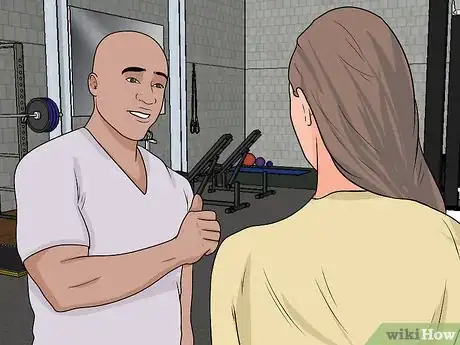


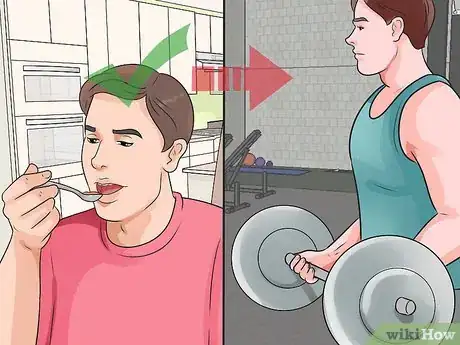


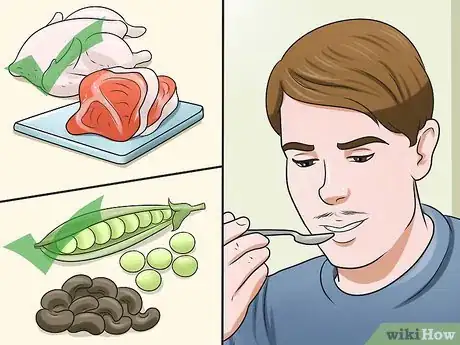
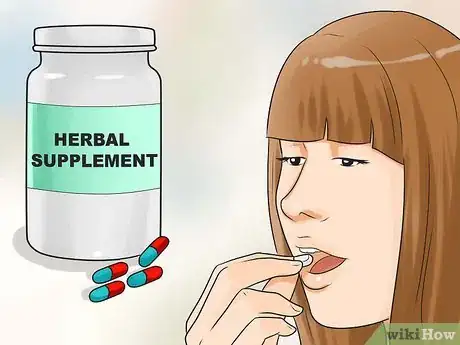


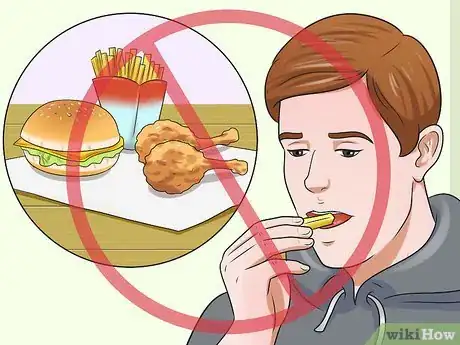






-Step-14-Version-3.webp)


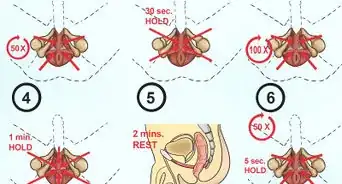



-Step-24.webp)










-Step-14-Version-3.webp)



































